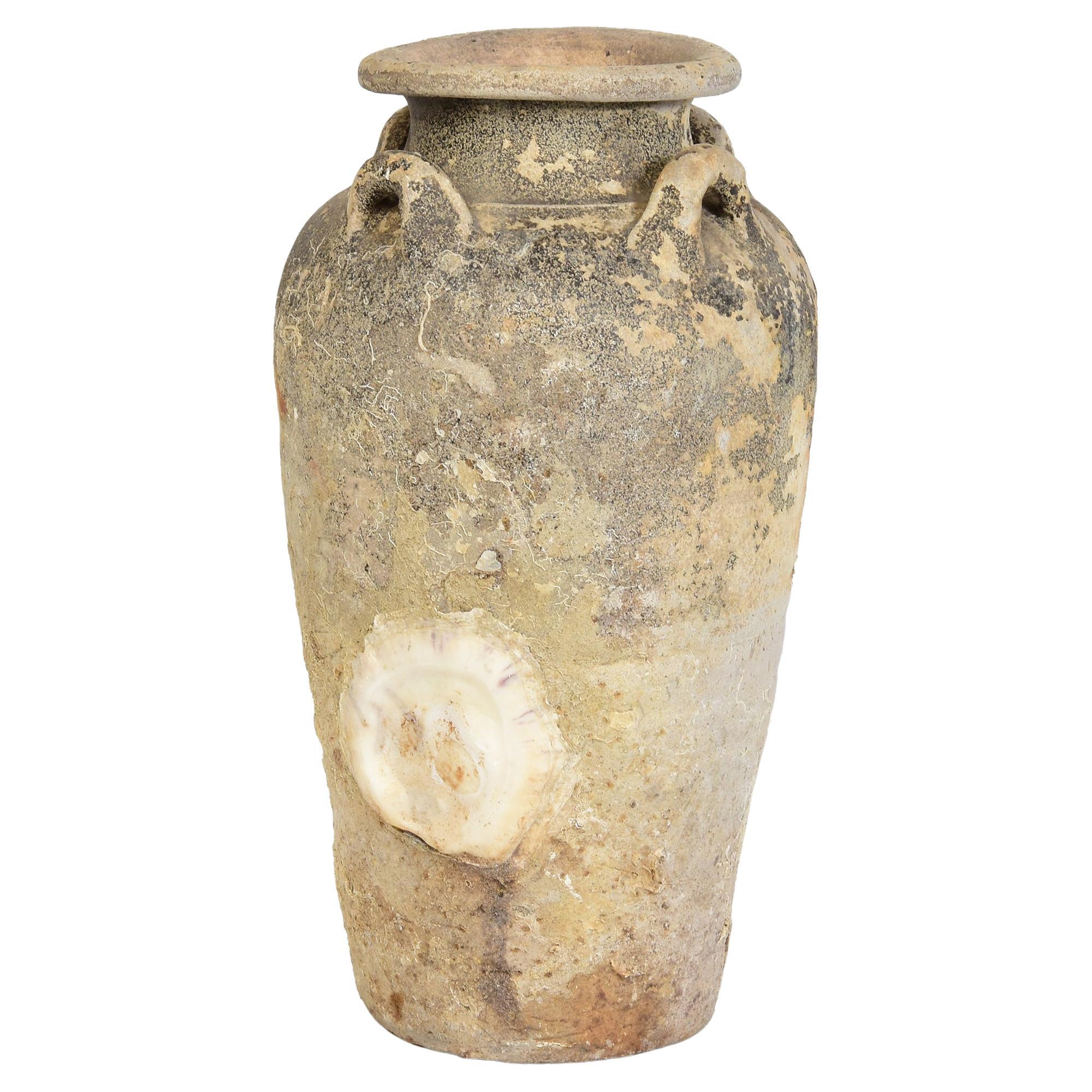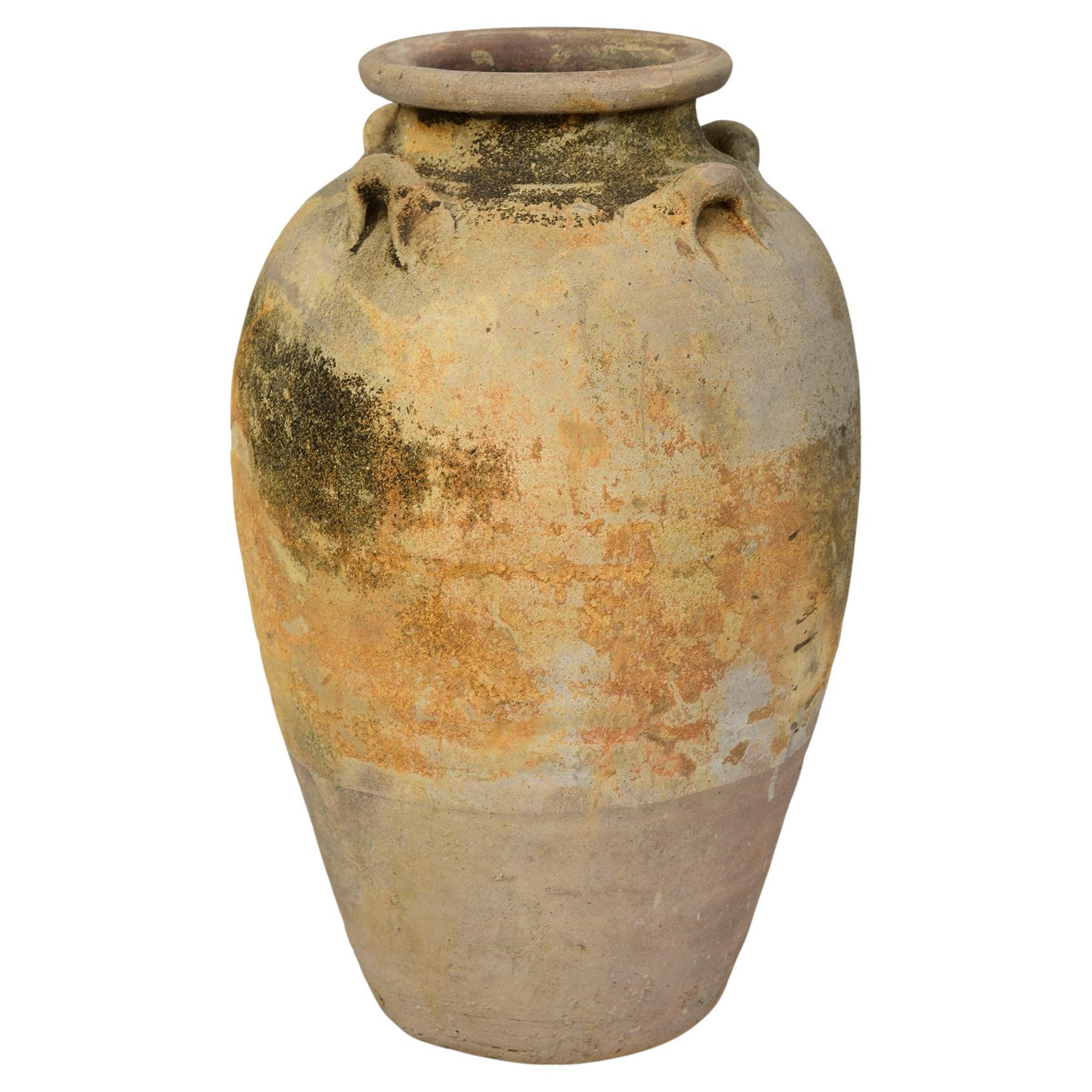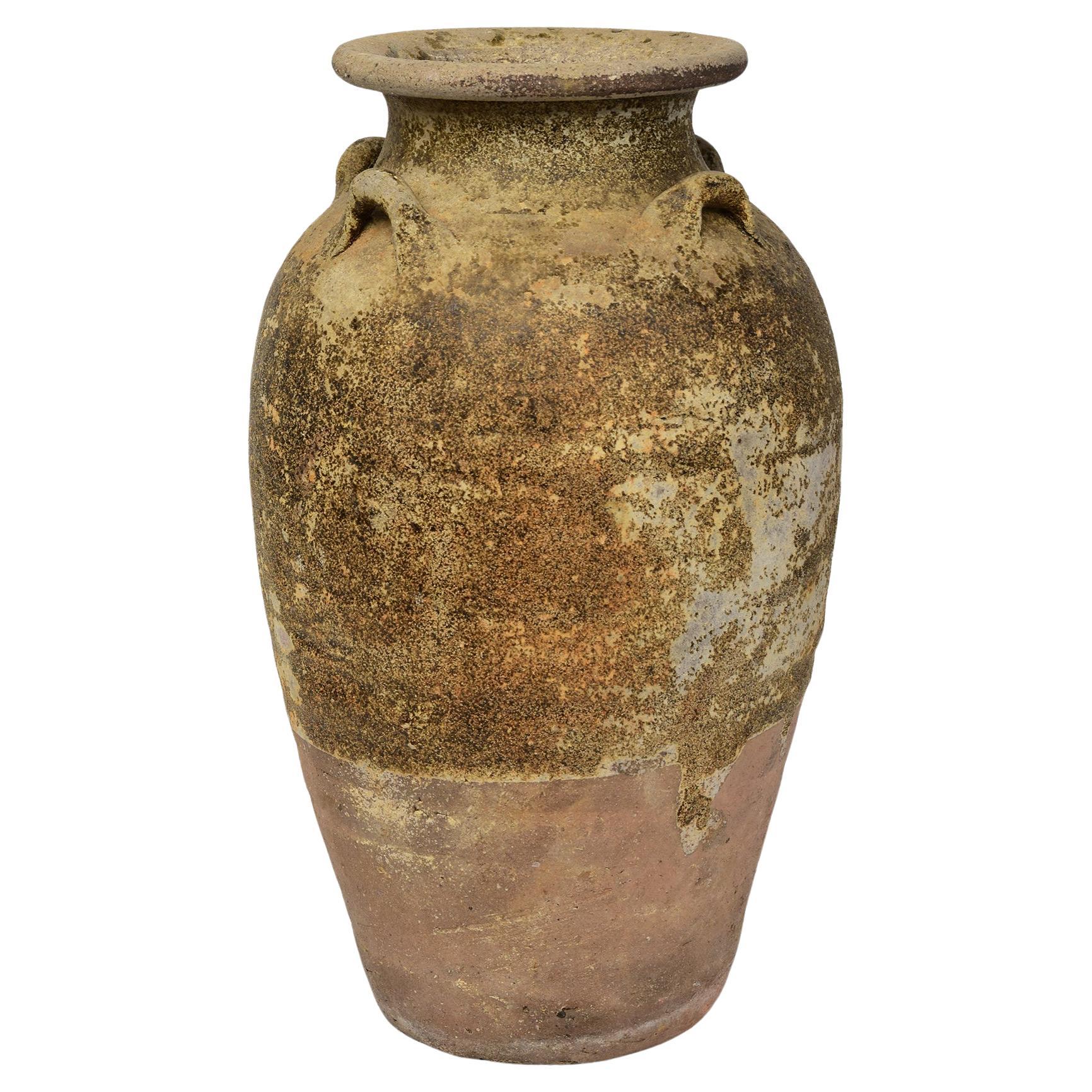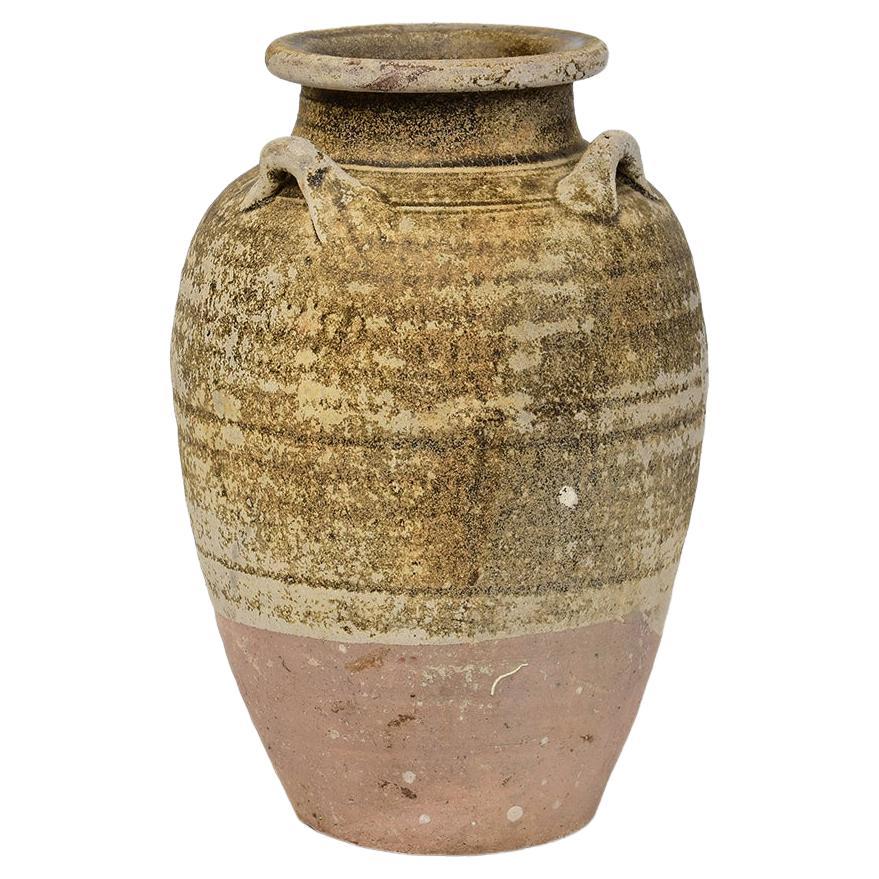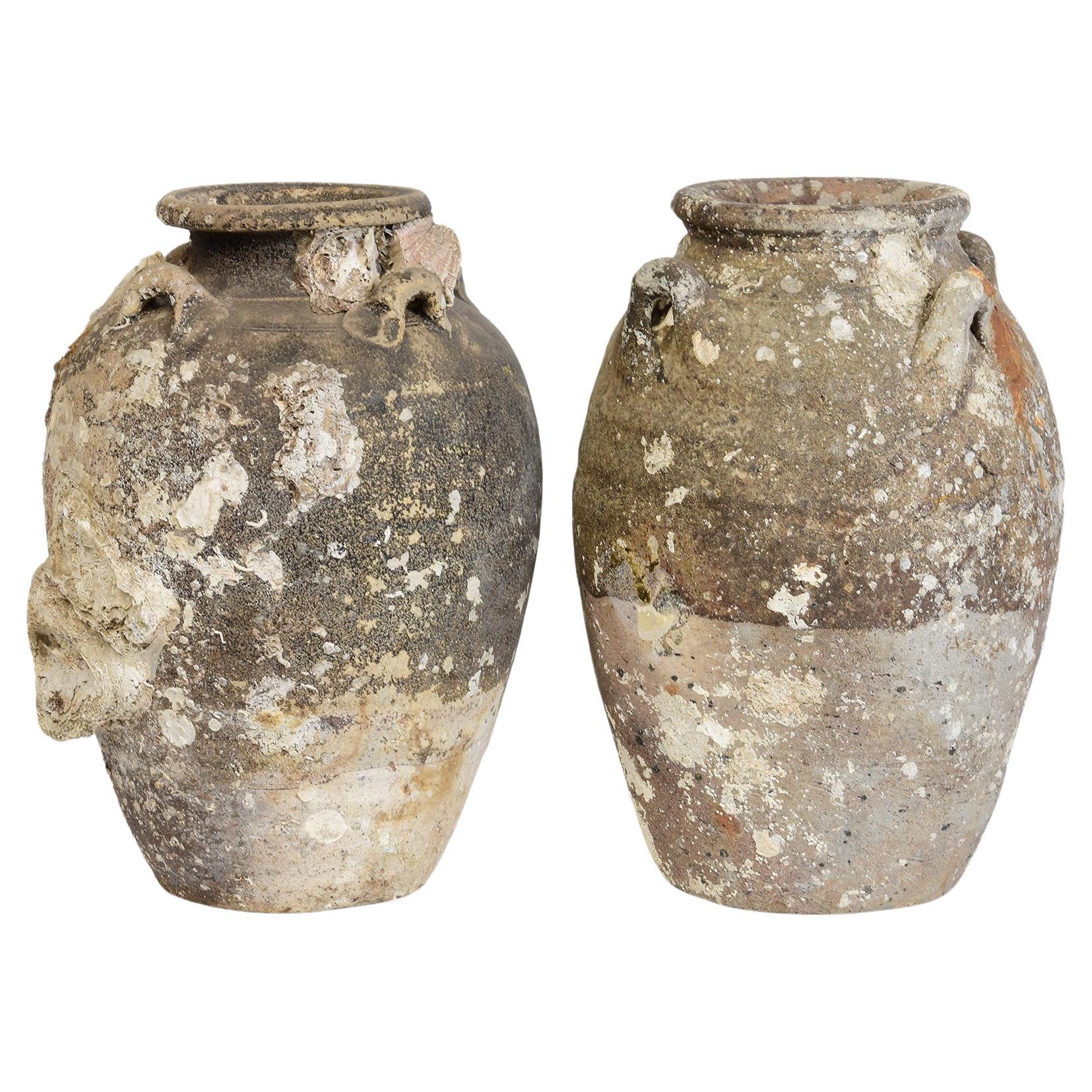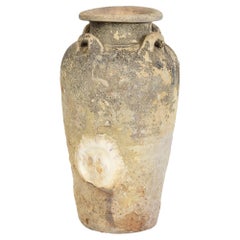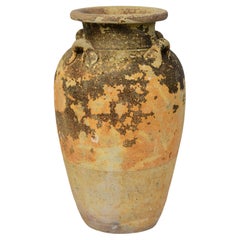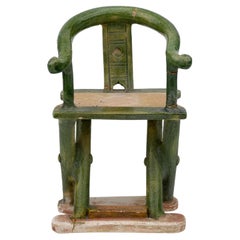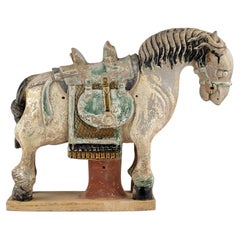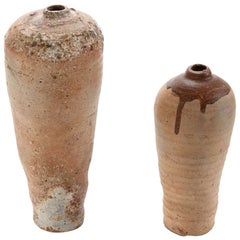Items Similar to 14th-16th Century, Sukhothai, Antique Sukhothai Pottery Jar from Shipwreck
Want more images or videos?
Request additional images or videos from the seller
1 of 13
14th-16th Century, Sukhothai, Antique Sukhothai Pottery Jar from Shipwreck
About the Item
Sukhothai pottery jar from shipwreck.
Age: Thailand, Sukhothai Period, 14th - 16th Century
Size: Height 27 C.M. / Width 21 C.M.
Condition: Nice condition overall (some expected degradation due to its age).
100% Satisfaction and authenticity guaranteed with free "Certificate of Authenticity".
- Dimensions:Height: 10.63 in (27 cm)Diameter: 8.27 in (21 cm)
- Materials and Techniques:
- Place of Origin:
- Period:
- Date of Manufacture:14th-16th Century
- Condition:
- Seller Location:Sampantawong, TH
- Reference Number:Seller: DG051022-21stDibs: LU5730228594682
About the Seller
4.9
Platinum Seller
Premium sellers with a 4.7+ rating and 24-hour response times
Established in 2004
1stDibs seller since 2021
94 sales on 1stDibs
Typical response time: 6 hours
- ShippingRetrieving quote...Shipping from: Sampantawong, Thailand
- Return Policy
Authenticity Guarantee
In the unlikely event there’s an issue with an item’s authenticity, contact us within 1 year for a full refund. DetailsMoney-Back Guarantee
If your item is not as described, is damaged in transit, or does not arrive, contact us within 7 days for a full refund. Details24-Hour Cancellation
You have a 24-hour grace period in which to reconsider your purchase, with no questions asked.Vetted Professional Sellers
Our world-class sellers must adhere to strict standards for service and quality, maintaining the integrity of our listings.Price-Match Guarantee
If you find that a seller listed the same item for a lower price elsewhere, we’ll match it.Trusted Global Delivery
Our best-in-class carrier network provides specialized shipping options worldwide, including custom delivery.More From This Seller
View All14th-16th Century, Sukhothai, Antique Thai Pottery Jar with Shell from Shipwreck
Located in Sampantawong, TH
Sukhothai pottery jar with natural shell and barnacle from shipwreck.
Age: Thailand, Sukhothai Period, 14th - 16th Century
Size: Height 31.6 C.M. / Width 16.8 C.M.
Condition: Ni...
Category
Antique 15th Century and Earlier Thai Antiquities
Materials
Pottery
$1,080 Sale Price
20% Off
14th-16th Century, Sukhothai, Antique Thai Sukhothai Pottery Jar
Located in Sampantawong, TH
Antique Thai Sukhothai pottery jar.
Age: Thailand, Sukhothai Period, 14th - 16th Century
Size: Height 29.7 C.M. / Width 17.3 C.M.
Condition: Nice condition overall (some expected de...
Category
Antique 15th Century and Earlier Thai Antiquities
Materials
Pottery
$600 Sale Price
20% Off
14th-16th Century, Sukhothai, Antique Thai Sukhothai Pottery Jar
Located in Sampantawong, TH
Antique Thai Sukhothai pottery jar.
Age: Thailand, Sukhothai Period, 14th - 16th Century
Size: Height 32.5 C.M. / Width 20 C.M.
Condition: Nice condition overall (some expected degr...
Category
Antique 15th Century and Earlier Thai Antiquities
Materials
Pottery
$720 Sale Price
20% Off
14th-16th Century, Sukhothai, Antique Thai Sukhothai Pottery Jar
Located in Sampantawong, TH
Antique Thai Sukhothai pottery jar.
Age: Thailand, Sukhothai Period, 14th - 16th Century
Size: Height 30 C.M. / Width 17.4 C.M.
Condition: Nice condition overall (some expected degr...
Category
Antique 15th Century and Earlier Thai Antiquities
Materials
Pottery
$600 Sale Price
20% Off
14th-16th Century, Sukhothai, Antique Thai Sukhothai Pottery Jar
Located in Sampantawong, TH
Antique Thai Sukhothai pottery jar.
Age: Thailand, Sukhothai Period, 14th - 16th Century
Size: Height 25.2 C.M. / Width 17 C.M.
Condition: Nice condition overall (some expected degr...
Category
Antique 15th Century and Earlier Thai Antiquities
Materials
Pottery
$704 Sale Price
20% Off
14th-16th C., A Pair of Antique Sukhothai Pottery Jars with Shell from Shipwreck
Located in Sampantawong, TH
A pair of antique Sukhothai pottery jars with natural shell and barnacle from shipwreck.
Age: Thailand, Sukhothai Period, 14th - 16th Century
Size: Height 26.5 - 26.9 C.M. / Width 1...
Category
Antique 15th Century and Earlier Thai Antiquities
Materials
Pottery
$1,560 Sale Price / set
20% Off
You May Also Like
16th Century Pottery Model of a Folding Chair, Ming dynasty
Located in seoul, KR
This piece is an example of Mingqi, items specifically crafted for burial to accompany the deceased into the afterlife. The terracotta army is the most renowned example of such buria...
Category
Antique 16th Century Hong Kong Ming Antiquities
Materials
Pottery
$903 Sale Price
35% Off
Ming Period Large Pottery Horse with Saddle (15-16th Century)
Located in seoul, KR
This Ming Dynasty painted pottery horse is depicted standing on a tiered rectangular pedestal. The horse has a well-proportioned body, with sturdy legs and a slightly arched neck. The eyes and muzzle are subtly outlined and incised.
The mane is sculpted with deep, parallel grooves. The tail is long and slightly curved left, extending downward. The saddle is prominently featured at the center of the horse’s back, detailed with a raised, rounded seat and an attached stirrup hanging down one side. The saddlecloth is textured with a crosshatch pattern, bordered by a row of carved fringe-like elements. The horse's legs display subtle musculature, and the hooves are clearly defined, with black pigment accentuating their edges.
The original painted pigments, including white, black, and ochre, are still visible, though faded in some areas. The black pigment highlights the mane, tail, and parts of the bridle, while the ochre tones accentuate the saddle and decorative elements.
Period: Ming Dynasty
Medium: Green, black, and ochre glazed Pottery
Type: Figure
Provenance : Acquired in late 1990s from Hongkong
Reference : Asian Civilisations Museum - Accession No. C-1384 / 1994-00441 - Ming Dynasty Figure of Horse
(Type : Closely Related)
* Ming Dynasty Glazed Pottery Figures
Ming Dynasty glazed pottery figures are renowned for their bold color palette, intricate detailing, and lifelike forms, distinguishing them from earlier traditions. These figures, which depict officials, warriors, animals, and mythical creatures, are characterized by high-gloss lead-based glazes in green, amber, ochre, and sancai (three-color) combinations. The thickly applied glaze pools in recesses, creating depth and enhancing sculptural details. With dynamic postures, expressive facial features, and meticulously rendered drapery, these figures reflect the period’s advancement in ceramic craftsmanship, offering a greater sense of movement and realism compared to the rigid and stylized forms of earlier dynasties.
A defining characteristic of Ming glazed pottery is its elaborate surface detailing, often achieved through raised relief elements and contrasting glazes. Equestrian figures, for example, feature carefully sculpted saddles, harnesses, and decorative embellishments, while human figures are adorned with intricate robes and headdresses. The large scale of these tomb figures, often more imposing than those from previous periods, underscores the increasing importance of funerary art during the Ming era. Unlike later Qing Dynasty figures...
Category
Antique 15th Century and Earlier Hong Kong Ming Antiquities
Materials
Pottery
$2,600 Sale Price
35% Off
Ming Period Large Pottery Horse with Saddle (15-16th Century)
Located in seoul, KR
The figure stands on a rectangular base. The horse is depicted in a poised stance, with strong, muscular legs and a slightly bowed head. The mane is carefully sculpted with deep, flowing grooves, adding a dynamic texture to the piece. The head features expressive details, including a well-defined muzzle, flared nostrils. The bridle and harness are delicately painted in faded green, contrasting against the creamy beige body. The saddle is adorned with intricate details, including decorative tassels and a textured pattern, indicative of the elaborate tack used in the Ming period.
Traces of original polychrome pigments in green, black, and ochre remain on the surface, hinting at the sculpture’s once-vibrant appearance. The weathered patina and areas of flaking paint add to its historical authenticity, reflecting centuries of age. The overall craftsmanship and detailing exemplify the Ming Dynasty’s refined ceramic artistry, making this piece a remarkable representation of of asian culture during this period.
Period: Ming Dynasty
Medium: Green, black, and ochre glazed Pottery
Type: Figure
Condition : Good(chips on the upper saddle.)
Provenance : Acquired in late 1990s from Hongkong
Reference : Asian Civilisations Museum - Accession No. C-1384 / 1994-00441 - Ming Dynasty Figure of Horse
(Type : Closely Related)
* Ming Dynasty Glazed Pottery Figures
Ming Dynasty glazed pottery figures are renowned for their bold color palette, intricate detailing, and lifelike forms, distinguishing them from earlier traditions. These figures, which depict officials, warriors, animals, and mythical creatures, are characterized by high-gloss lead-based glazes in green, amber, ochre, and sancai (three-color) combinations. The thickly applied glaze pools in recesses, creating depth and enhancing sculptural details. With dynamic postures, expressive facial features, and meticulously rendered drapery, these figures reflect the period’s advancement in ceramic craftsmanship, offering a greater sense of movement and realism compared to the rigid and stylized forms of earlier dynasties.
A defining characteristic of Ming glazed pottery is its elaborate surface detailing, often achieved through raised relief elements and contrasting glazes. Equestrian figures, for example, feature carefully sculpted saddles, harnesses, and decorative embellishments, while human figures are adorned with intricate robes and headdresses. The large scale of these tomb figures, often more imposing than those from previous periods, underscores the increasing importance of funerary art during the Ming era. Unlike later Qing Dynasty figures...
Category
Antique 15th Century and Earlier Hong Kong Ming Antiquities
Materials
Pottery
$2,600 Sale Price
35% Off
Encrusted Cizao tradeware from Fujian, 13th/14th century (TWO AVAILABLE)
Located in Chicago, IL
Two pieces of a pair of encrusted rare Cizao tradeware vessels from Fujian. These items were made for export to Southeast Asia. Southern Song to Yuan Dyn...
Category
Antique 15th Century and Earlier Chinese Antiquities
Materials
Pottery
Shipwreck Jar from the Kingdom of Sukhothai, Thailand, 17th Century
Located in Jimbaran, Bali
A wonderful example of a 17th Century Sawankhalok ceramic jar from the Kingdom of Sukhothai, Thailand. It features a wonderfully subtle turquoise undertone as well as natural marine ...
Category
Antique 17th Century Thai Other Ceramics
Materials
Ceramic
16th Century Stone Pillar, Sianxi, China
Located in New York, NY
A carved stone pillar from Shanxi, China, circa 1560.
Mounted on a heptagonal wood base.
Category
Antique 16th Century Chinese Ming Pedestals and Columns
Materials
Stone
$5,281 Sale Price
35% Off
